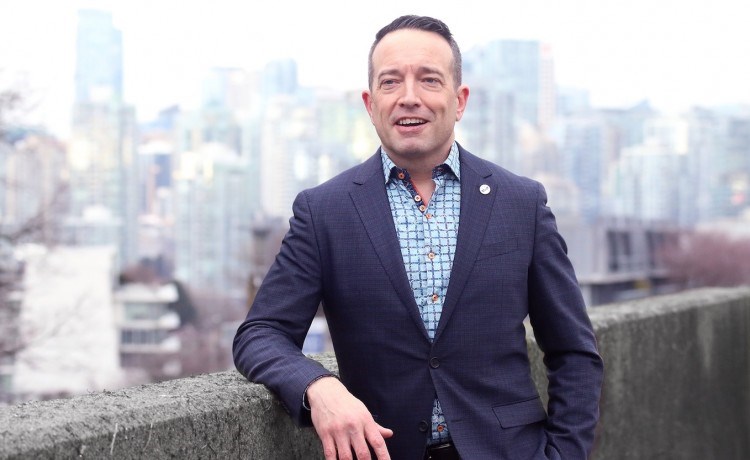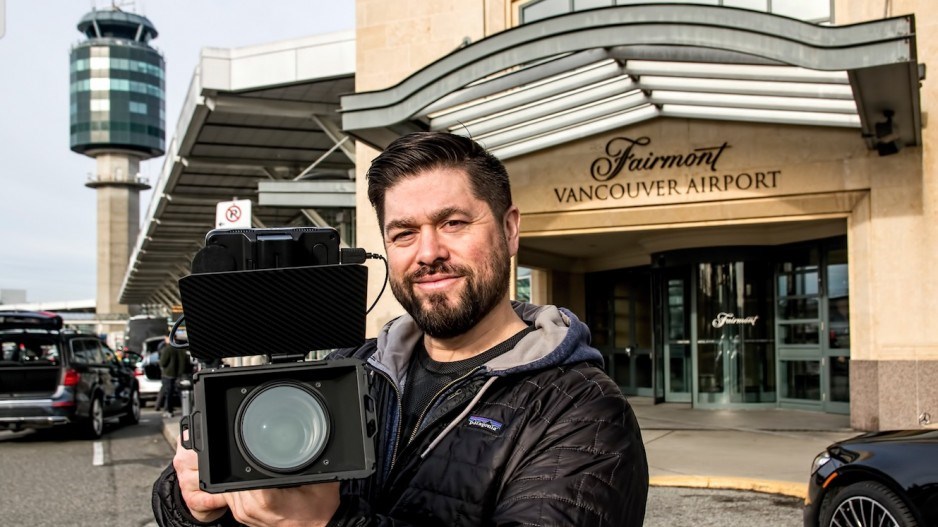Businesses can struggle to achieve brand recognition as consumers live in a crowded media landscape that bombards them with messages everywhere they look.
One corporate strategy is to build business and brand awareness by using social influencers – people who have a significant online platform made up of dedicated followers.
Done right, a social campaign could be catchy enough to get covered by mainstream media, thereby amplifying a sponsor’s message, and keeping the initiative in the public imagination for years afterward.
The Vancouver Airport Authority, for example, in 2011 paid Jaeger Mah $15,000 in salary plus $50 per day to spend on merchants as part of an 80-day stint where he lived at the airport, blogging and posting videos. The point was to highlight the Fairmont Vancouver Airport hotel and the many stores and restaurants inside the airport’s terminals.
Mah has since gone on to work with a range of clients through his Punchline Video Production company.
The next year, Tourism Richmond paid Lindsay Anderson $50,000 in salary plus a $30-per-day stipend to eat exclusively at Richmond restaurants and blog about it for a year.
Similarly, when Marriott International Inc. wanted to promote its Douglas Autograph Collection hotel when it opened in Vancouver in 2017, Marriott chose influencer Ally Pintucci as the winner of a contest to live at the hotel for free for a month and get $5,000 on the condition that she blog and create social media posts about her experiences.
Retail analyst and DIG360 owner David Gray told BIV that outlandish social-influencer campaigns are best in attracting mainstream media attention. Simply paying someone to use a product and post on social media may not be as effective, he said.
“There are lots of examples where influencers may be getting views but are not driving consumer behaviour,” he said.
To maximize the bang for the buck, the key is to ensure that chosen social influencers have appropriate follower bases, and are seen as genuine in their praise for the product, he said.
Geographical reach is key because it does a brand little good if many of the influencer’s followers live in a region where they are not able to buy the recommended products, he said.
Some organizations have criteria on their websites to make clear what influencers they might be willing to work with.
Destination British Columbia, for example, requires influencers to have at least 50,000 followers on one social media platform, to have a 2.4-per-cent engagement rate and to live within specific geographies among other conditions.
Most retail sectors could find success with the marketing strategy – not just restaurants and hotels, Gray said.
He helped Lee Valley Tools Ltd., which sells tools for woodworking and gardening, with an influencer-marketing strategy, he said.
“Their credibility was always from skilled, professional craftspeople, and they were always passively taking whatever kudos they got from that crowd,” Gray said.
When he was working with Lee Valley Tools in 2018, he noticed that many woodworkers had YouTube channels, where they posted videos showing how to complete certain projects.
“Some of them had pretty big followings,” Gray said.
When Lee Valley opened its first Montreal store, it invited a Quebec-based YouTube personality to be filmed on site making things with the tools, Gray said.
Sometimes small-business owners can cut out the influencer, do their own YouTube videos and become influencers in their own right.
Longtime Vancouver cookware-store owners Jed and Regan Grieve closed their Cook Culture store at 377 Howe Street last year as part of a pivot to focus on building online sales.
The duo’s YouTube channel had about 20,500 subscribers and they blasted a corporate newsletter to approximately 30,000 email accounts, Jed Greive told BIV at the time.
When influencers are used, the key is to find ones who have legitimacy in recommending the sponsored products.
“Sometimes micro-influencers are better than the Kim Kardashians of the world,” said Professional Sales Academyprincipal Shane Gibson, who has written books about social-media marketing.
“They’re more affordable, and they’re more believable.”
He said these micro-influencers may only have 900 followers each, but they likely have deep connections within a specific business niche, he said. If a company engages 30 of these influencers at an event, or as part of a campaign, the results can be substantial.
Vancouver-based intermediaries such as INF Influencer Agency and MuseFind help link companies with influencers. Musefind was built by entrepreneur Jennifer Yemu Li Chiang, who split time between Vancouver and New York City while establishing her company.
Digital tools help to calculate return on investment
Business maxims abound on the importance of tracking dollars spent on marketing.
Variations include, “If you can’t measure it, you can’t manage it,” or, “You can’t improve what you don’t measure.”
Indeed, the beautiful thing about the digital world is that clicks can be counted, unlike word-of-mouth recommendations that generate sales in the physical world.
Social-media platforms such as LinkedIn, Twitter and Facebook are often preferred because they allow users to post links to corporate websites, podcasts or specific e-commerce gateways in a way that other platforms do not.
TikTok and Instagram, in contrast, do not allow links in standard posts.
Instagram’s short video “reels,” which users scroll through, do not allow links, but Instagram “stories” do, Gibson explained.

The site’s “stories” function is accessible by touching users’ profiles that are shown in circles atop the Instagram page.
Many users tag brands or other accounts in their stories.
In Instagram reel posts and TikTok posts, influencers often tell readers or viewers to check out their profile’s biography, where links can be included, Gibson said.
Marketing executives usually know how many hits their e-commerce landing pages get in a week, so if that rate spikes during an influencer campaign, they can easily determine part of the value of the campaign, he added.
“If you’re a smart marketer, you know you have, for example, 100 visitors on your site, on average, and a three-per-cent overall conversion rate for first-time visitors,” Gibson said. “If my average shopping-cart value is $200, I know that if I get an extra 50 visitors, that’s an extra $300 in sales from influencer activity.”
Free Google analytics tools from Alphabet Inc. (Nasdaq:GOOGL) enable companies to create Google tracking links and give each influencer a distinct link with a code appended to the URL that goes to a separate landing page.
Executives are then able to track how many clicks each influencer is generating, and how many of those clicks get converted into sales transactions.
“Conversion is important to know,” Gibson said.
“Maybe Shane can get 100 people to visit the page and Sarah only gets 10 – but Sarah converted nine of those visits and Shane only converted two.”
Another method to track influencers is to give each one a distinct coupon code for use by followers who want to buy a recommended item.
Gibson said companies can also use affiliate programs with large e-commerce companies, such as Amazon.com, Inc.(Nasdaq:AMZN).
“I could sign up to Amazon as an affiliate and talk about Nike [Inc. (NYSE:NKE)] running shoes on my website,” Gibson said. “When you click my affiliate link and purchase those running shoes on the Amazon.com website, I get a small commission.”
This kind of program can incentivize influencers to generate sales activity.
“A lot of influencers don’t want to be product shills, but you can use this as a way to track the campaign,” Gibson said.
Deinfluencing – a latest trend
While social influencers are best known for accepting money and then producing the social-media equivalent of an infomercial, one emerging trend does the opposite.
Dubbed “de-influencing,” some recent popular TikTok videos have featured people trashing various products they say are not up to snuff.
The woman behind the TikTok account @Jacquelyn tells viewers that her post is “another de-influencing video so we can all save some money.”
She then disparages Olaplex hair products for allegedly making her hair fall out.
A video from @maddiebwells shows her calling Mario Badescu face cream a “monstrosity.” It has millions of views.
These videos might be viewed as a response to influencers who are not genuine in their praise of products, and who sometimes go to extreme lengths to falsify products’ merit and mislead unsuspecting consumers.
Last month, influencer Mikayla Nogueira angered many on social media with what some saw as a seemingly blatant and misleading mascara advertisement.
Among tens of thousands of comments, countless people accused Nogueira of wearing fake eyelashes while singing the praises of a L’Oreal eyelash-enhancing product in a TikTok video.
“I’m not sure anyone is ever going to be able to compete with this mascara,” Nogueira gushed in the video.
Gray said the phrase “de-influencing” might be new but the idea that people could go online and disparage products has long been a corporate risk.
“If you’re a brand, you have got to be out there seeing what’s going on because somebody might be online saying that your bath bomb, or whatever, has issues,” he said.
Sometimes corporate disputes with online curmudgeons can lead to legal action.
BC Supreme Court last summer ordered Tyler Ginther to pay Longhouse Specialty Forest Products $90,000 in damagesafter Ginther posted bad Google and Yelp reviews about the family-run lumber business that Justice Nitya Iyer found to be untrue and malicious.
“The reviews say that the plaintiffs are fraudulent and deceitful, and that they scammed Mr. Ginther by charging him for a product he did not order and made up fake invoices to support their fraud,” Iyer explained in her judgment.
Ginther wrote the posts in 2017 and 2018. He refused to take them down when asked, and the reviews remained online until 2021.
Iyer found that the posts could have deterred prospective customers, and therefore harmed co-owners Brian and Moila Jenkins, and the business’s reputation. •



